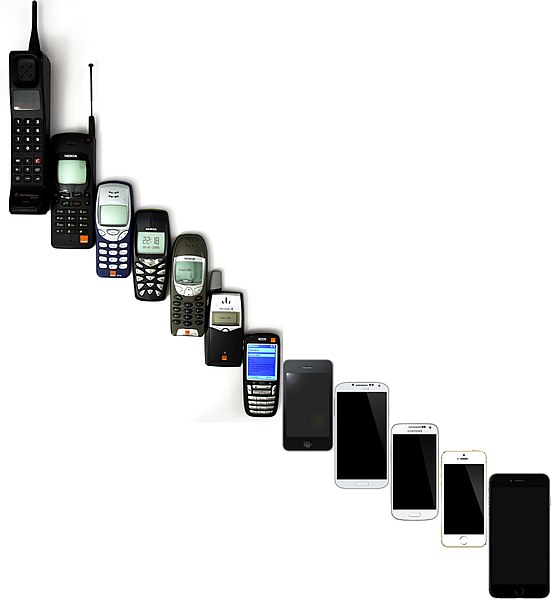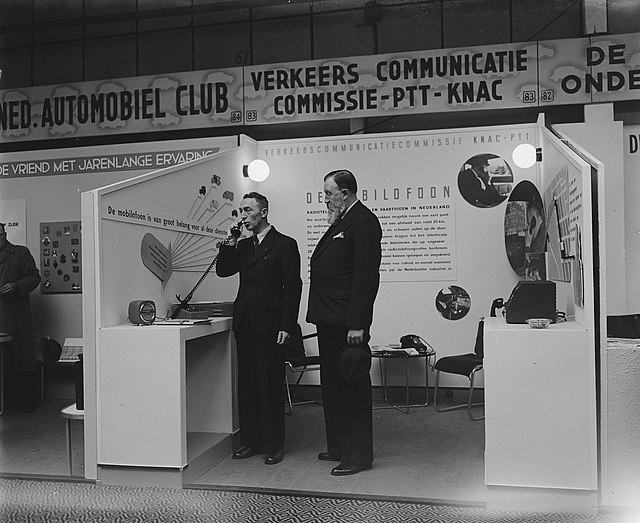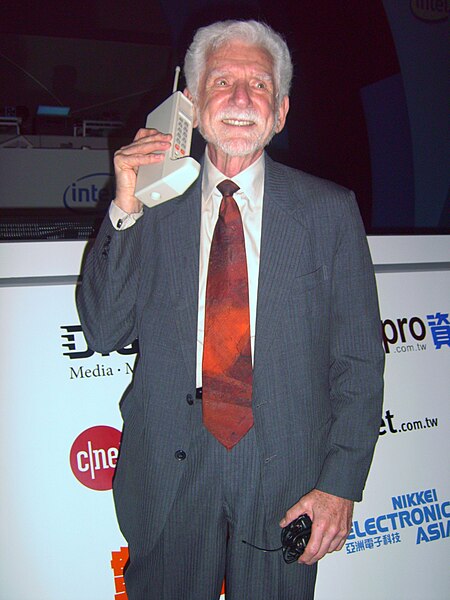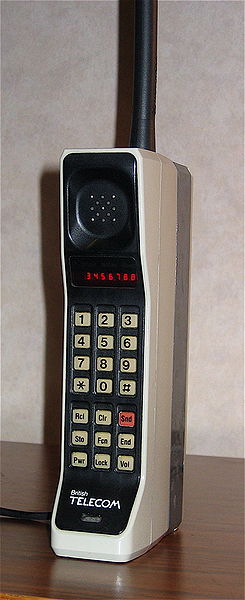Mobile telephony is the provision of telephone services to mobile phones rather than fixed-location phones. Telephony is supposed to specifically point to a voice-only service or connection, though sometimes the line may blur.
Mobile phone tower
Mobile telephone antennas tower
Booth presenting the first Dutch vehicle or watercraft telephone ("Mobilofoon"), a collaboration of the Royal Dutch Automobile Club (KNAC), and the Netherlands Postal, Telegraph and Telephone (PTT) at the 1948 Amsterdam International Motor Show (AutoRAI).
Use of an early mobile phone in Austria, 1964
A mobile phone is a portable telephone that can make and receive calls over a radio frequency link while the user is moving within a telephone service area, as opposed to a fixed-location phone. The radio frequency link establishes a connection to the switching systems of a mobile phone operator, which provides access to the public switched telephone network (PSTN). Modern mobile telephone services use a cellular network architecture, and therefore mobile telephones are called cellphones in North America. In addition to telephony, digital mobile phones support a variety of other services, such as text messaging, multimedia messaging, email, Internet access, short-range wireless communications, satellite access, business applications, payments, multimedia playback and streaming, digital photography, and video games. Mobile phones offering only basic capabilities are known as feature phones ; mobile phones that offer greatly advanced computing capabilities are referred to as smartphones.

Two decades of evolution of mobile phones, from a 1992 Motorola 8900X-2 to the 2014 iPhone 6 Plus
Martin Cooper of Motorola, shown here in a 2007 reenactment, made the first publicized handheld mobile phone call on a prototype DynaTAC model on 3 April 1973.
The Motorola DynaTAC 8000X. In 1983, it became the first commercially available handheld cellular mobile phone.
Dupuis and Haug during a GSM meeting in Belgium, April 1992








